Artist Mark Rafter shares a fascinating collection of boldly textured and vibrantly colored abstract sculpture. Visit his website to see more of his work.
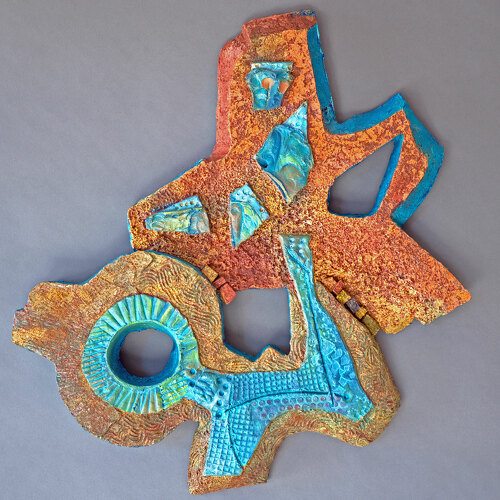
“Piggyback” EPS, cement, clay, acrylics, copper and iron, 31″ x 23″ x 3″
My wall-mounted and freestanding pieces are constructed with expanded polystyrene, acrylics and cement, then finished with a copper metal coating, rusting patinas, iron and acrylic paints. This unique combination of materials allows me to create large lightweight sculptures that are highly textural with engaging designs and vibrant colors.
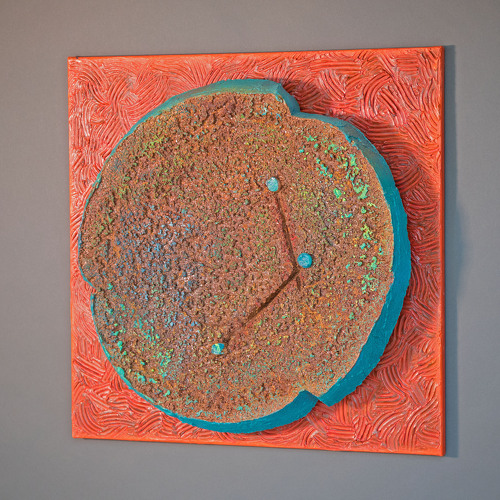
“Meteor Plate” EPS, cement, clay, acrylics, copper and iron, 24″ x 24″ x 3″
I consider my expressionistic sculptures to be a form of alchemy. The transformation of energy, unrelenting curiosity and recycled materials into works of art.
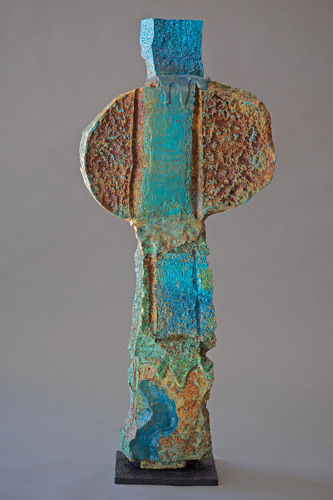
“Melting Point” EPS, cement, acrylics, steel, copper and iron, 27″ x 11″ x 6″
Art, genuinely made, is reflective of its creator. I am abstract at heart: I love abnormality, I don’t encourage smooth surfaces, I embrace “mistakes” and entropy. I often make challenging forms with convoluted boundaries, break things, melt stuff, create dynamic textures and then finesse the disorder into art.
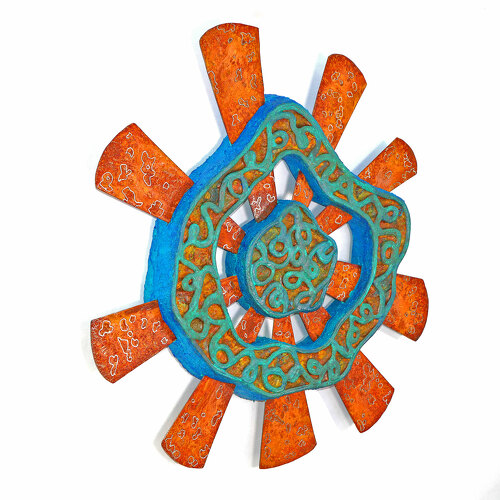
“Ferrous Wheel” EPS, cement, acrylics, steel, copper and iron, 28″ x 27″ x 3″
My art fits the notion of “outside art.” I have no formal art education to speak of. All the skills, materials knowledge and processes inherent in my work are self-taught.
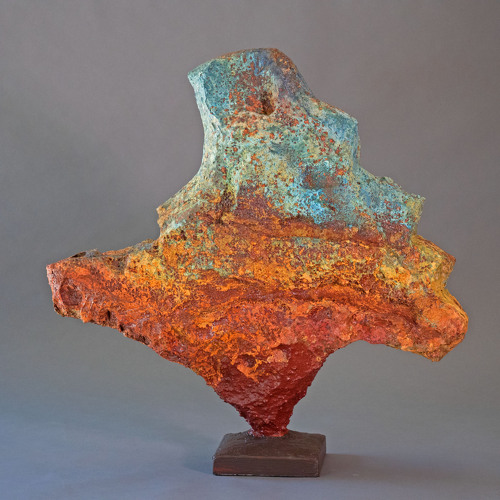
“Hoodoo” EPS, cement, acrylics, steel, copper and iron, 24″ x 24″ x 8″
A lengthy career as an engineer has been symbiotic with my decades-long enchantment with making art. Good engineering and quality art have many things in common, including the need to develop processes, solve problems, to test and experiment. I believe these components to be critically important to pushing boundaries in the creation of unique works of art.
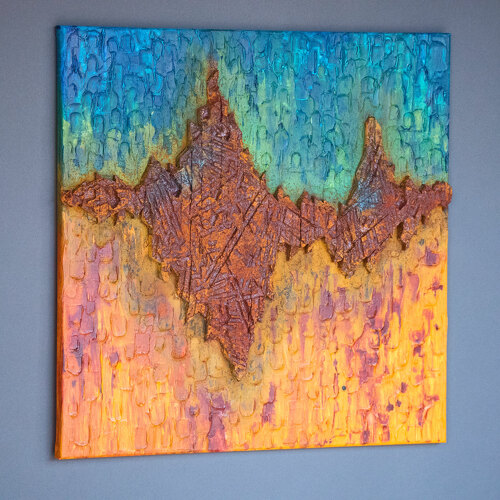
“What’s the Frequency” EPS, acrylics, copper and iron on canvas, 24″ x 24″ x 2″
My work consistently piques the curiosity of those willing to take the time to look. Like many artworks, my pieces have both a macro and a micro view. One typically starts by looking at the overall piece, it’s shape and colors, contrasts, positive and negative space in the design, etc.
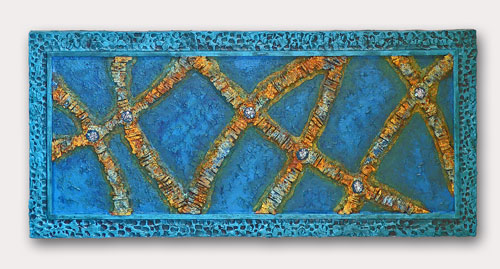
“Course Correction” EPS, cement, glass, acrylics, copper and iron, 24″ x 48″ x 3″
In Rust Elegy this macro shows, in effect, a “sculpture within a sculpture” as the colorful inner form contrasts with deep red, browns and rust of the outer form. If you look again, you might see that this outer form is itself an homage to another famous artwork.
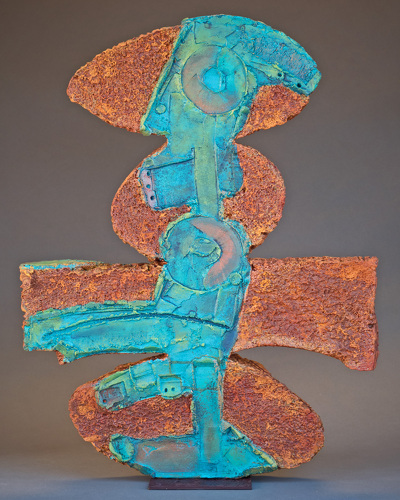
“Rust Elegy” EPS, cement, clay, acrylics, steel, copper and iron, 28″ x 21″ x 6″
In the close up (detail) view of the same piece, the craggy moon rock-like texture of the rusty outer form is the result of molten plastic quickly cooling and expending all the air captured in the making of “expanded” polystyrene. This provides an engaging, rugged surface for acid patinas to settle in and dissolve iron particles into a rusty varnish.
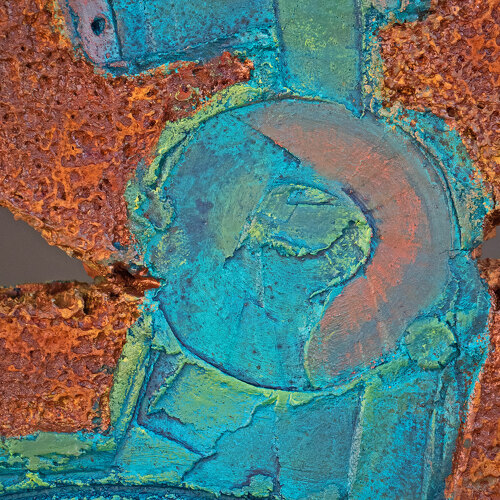
“Rust Elegy” (detail)
The material used in the “inner sculpture” is a homemade mixture of mortar clay, cement, sand and paper pulp that is malleable like modeling clay but air dries to a cement hardness. This “air clay” allows me to create detailed surfaces and shapes with dozens of texture tools and then paint, stain or color it to the desired effect.
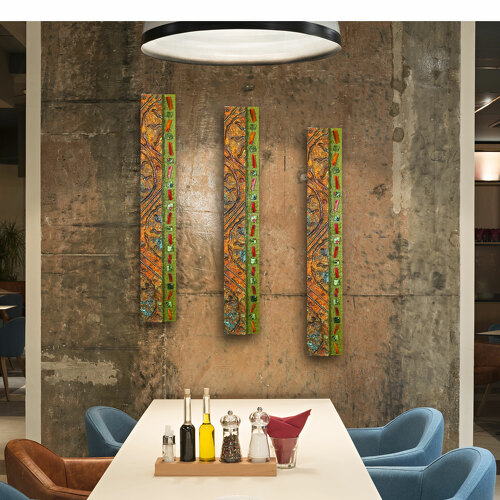
“Rust Expressions 4″ (in situ) – EPS, cement, acrylics, bronze, copper, iron and glass, each 30″ x 5″ x 2”
Art, to me, is a form of communication, a discourse with oneself: me with myself, in making it and then with the viewer in experiencing it. In creating a piece of art that resonates, that really works, I experience moments of pure joy and relish the opportunity to share that so uniquely human moment with others.
Mark Rafter invites you to follow him on Facebook, Instagram and YouTube.

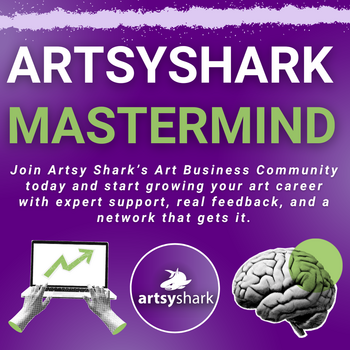
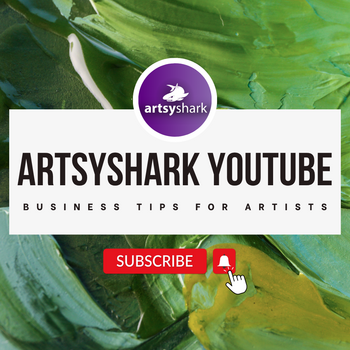
Speak Your Mind